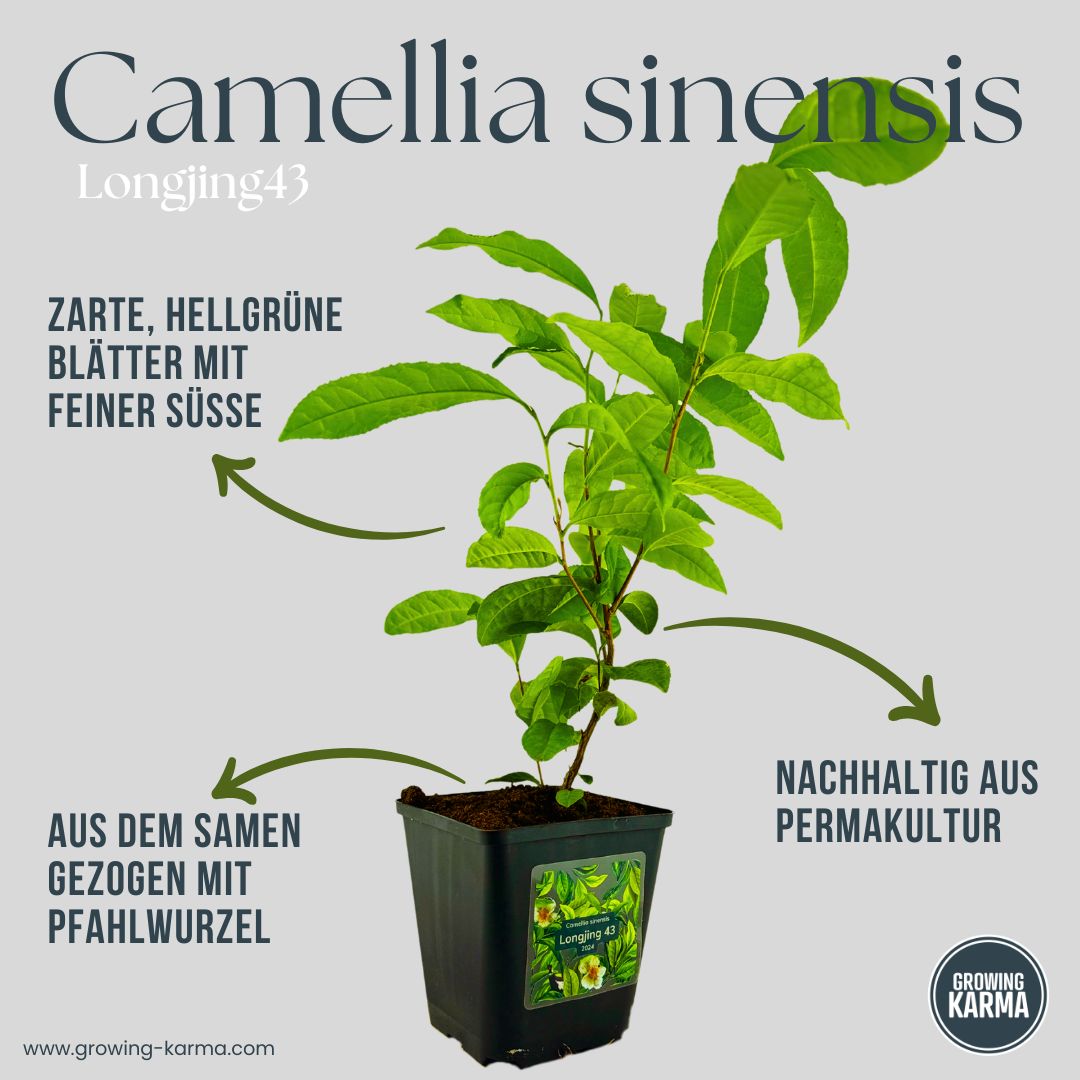
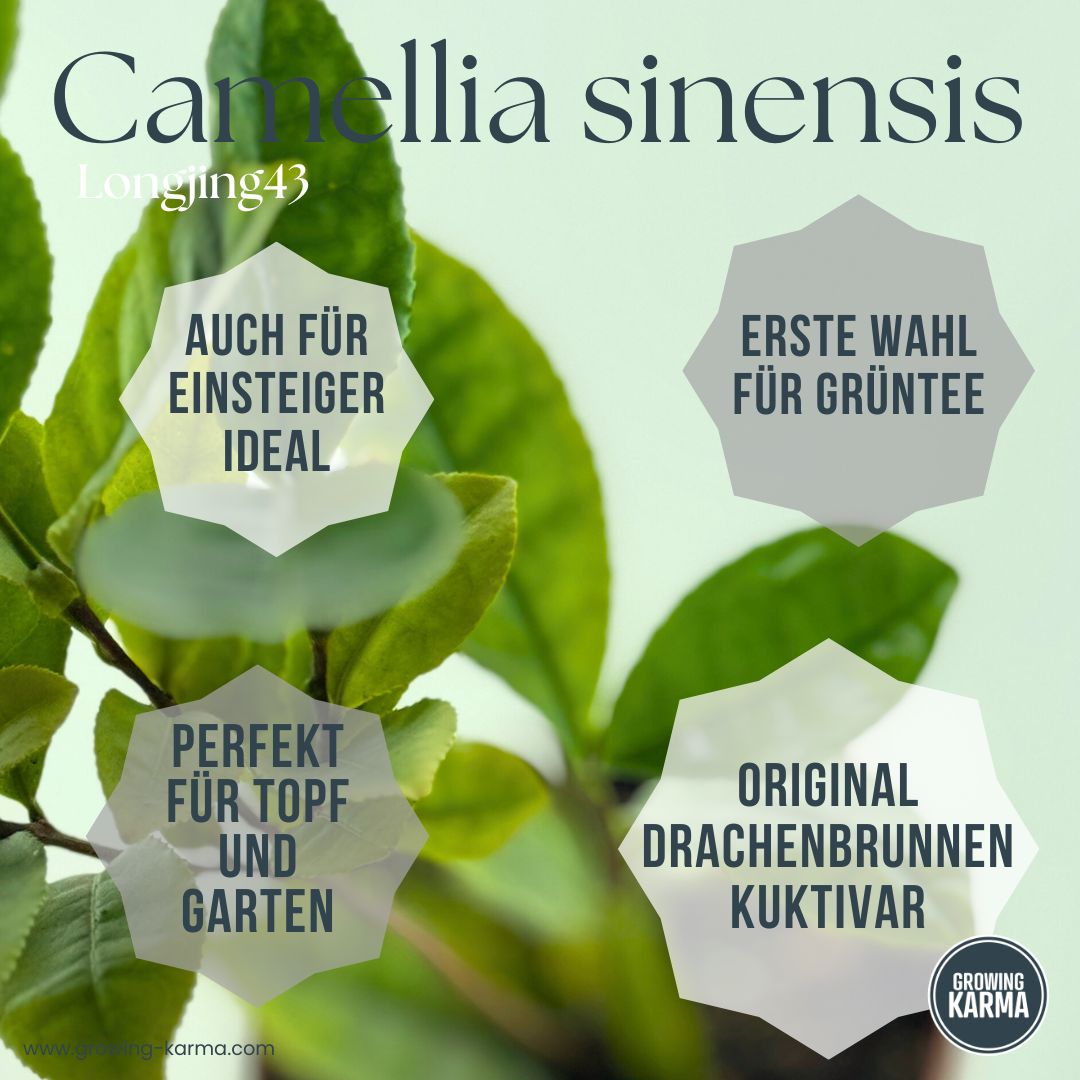
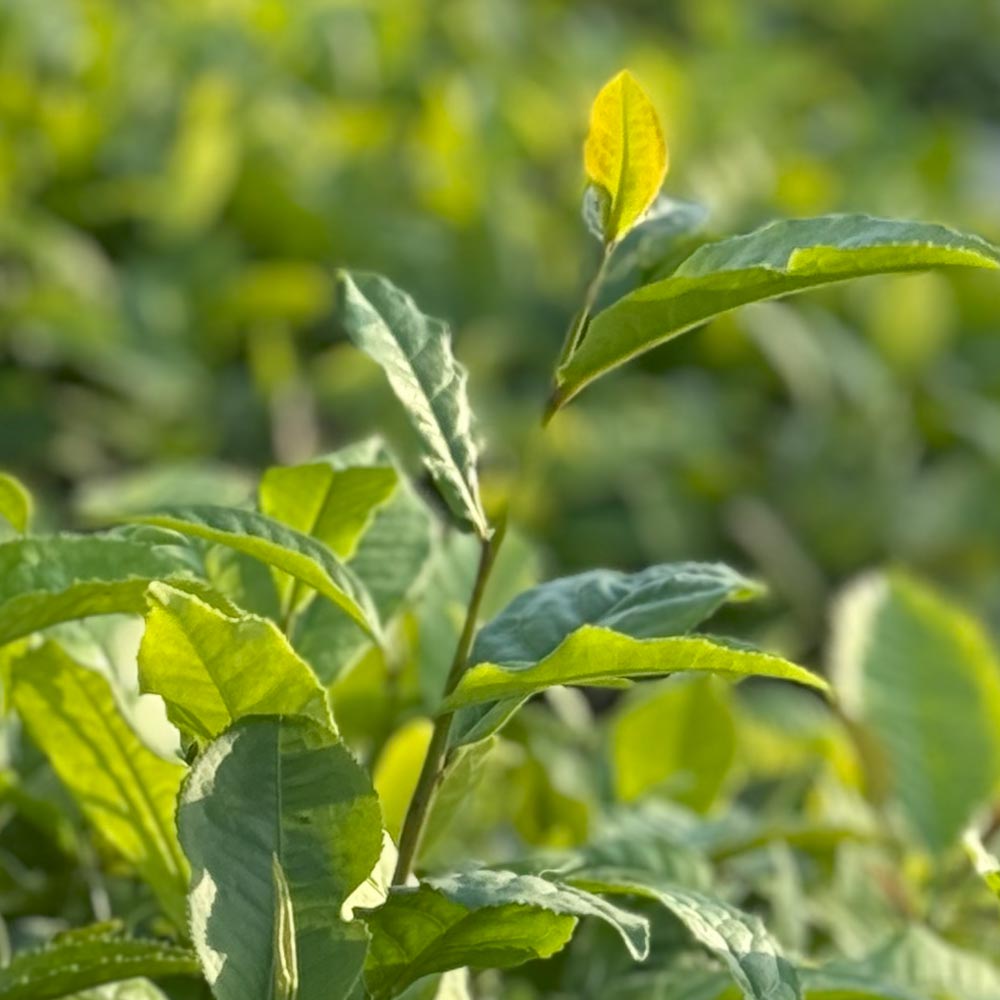
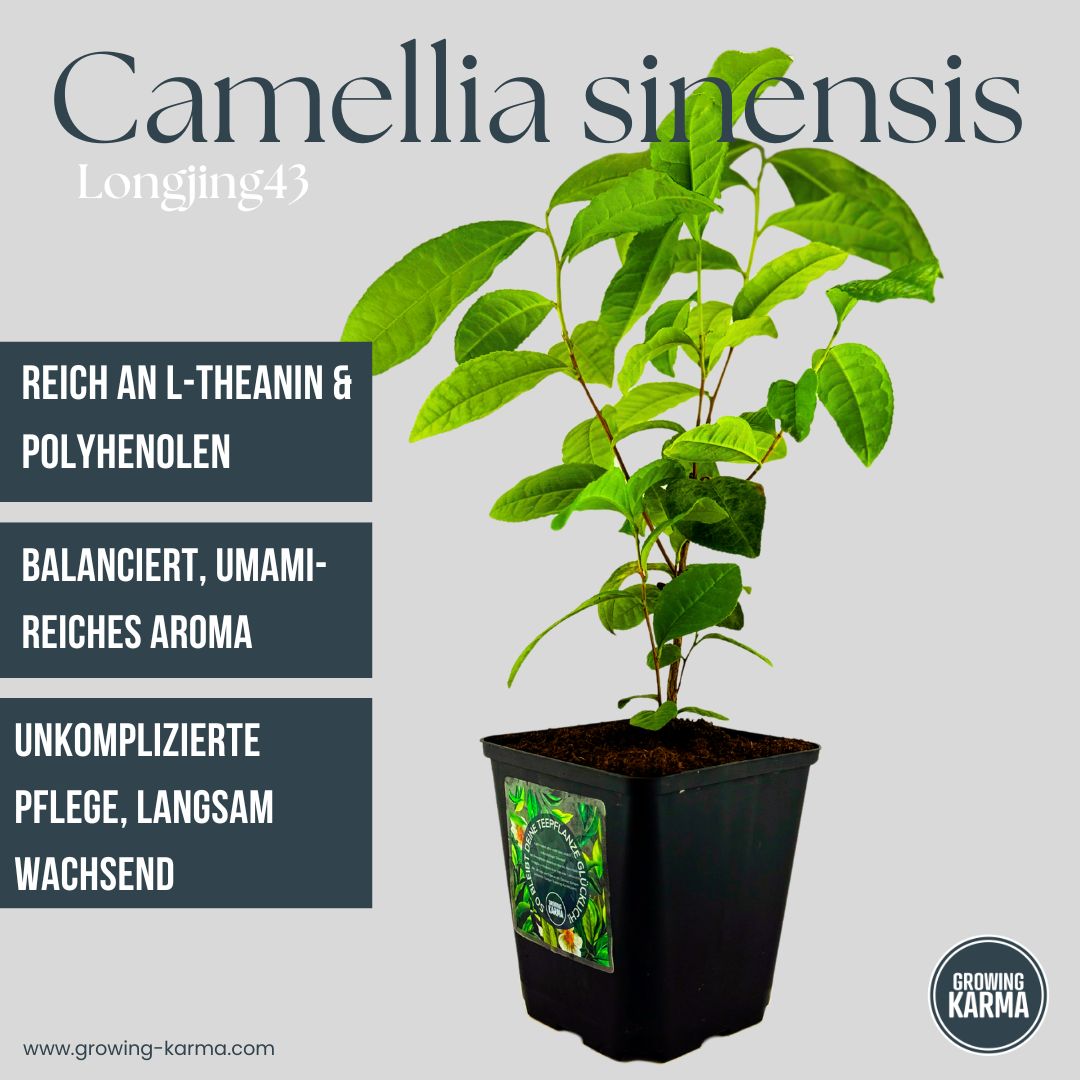
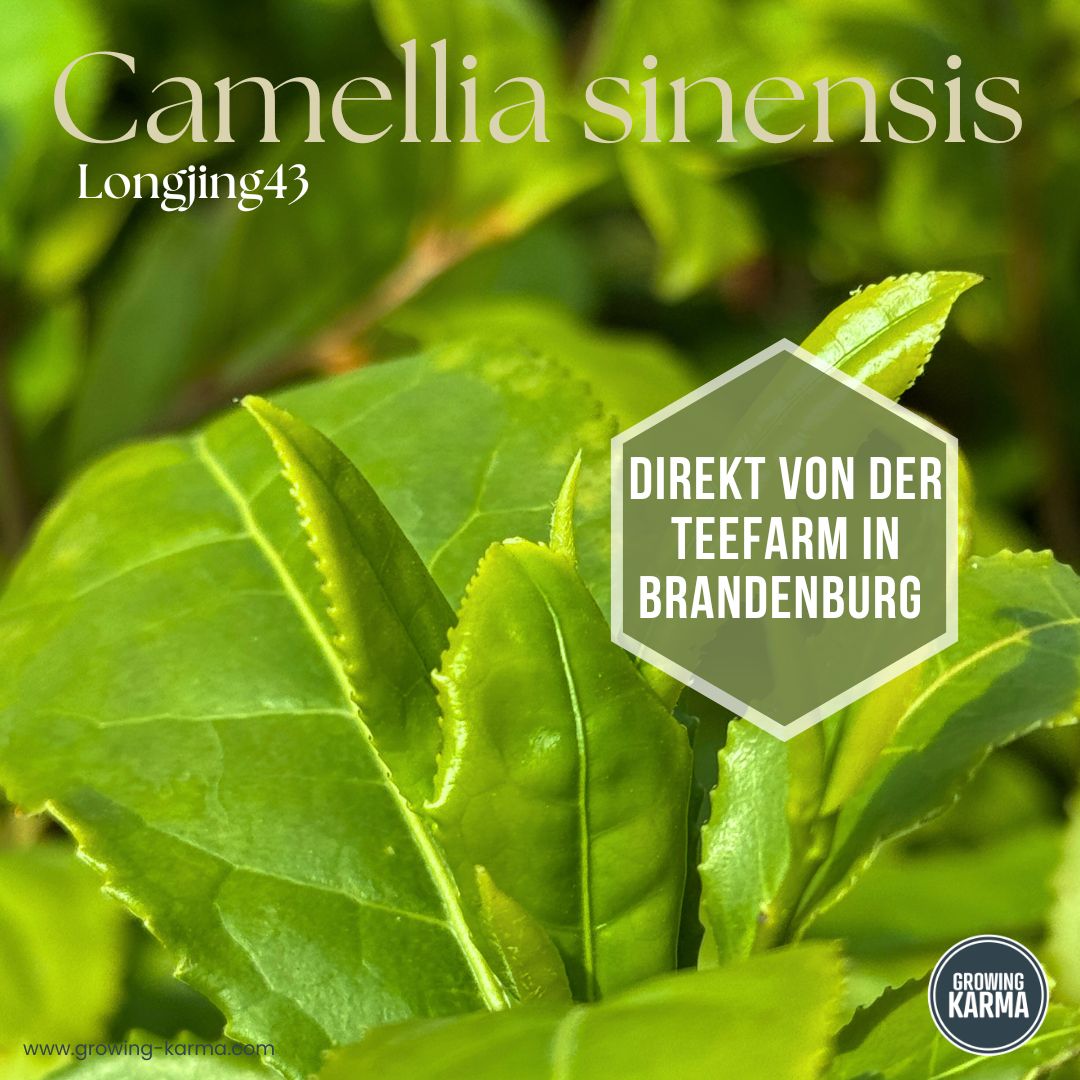
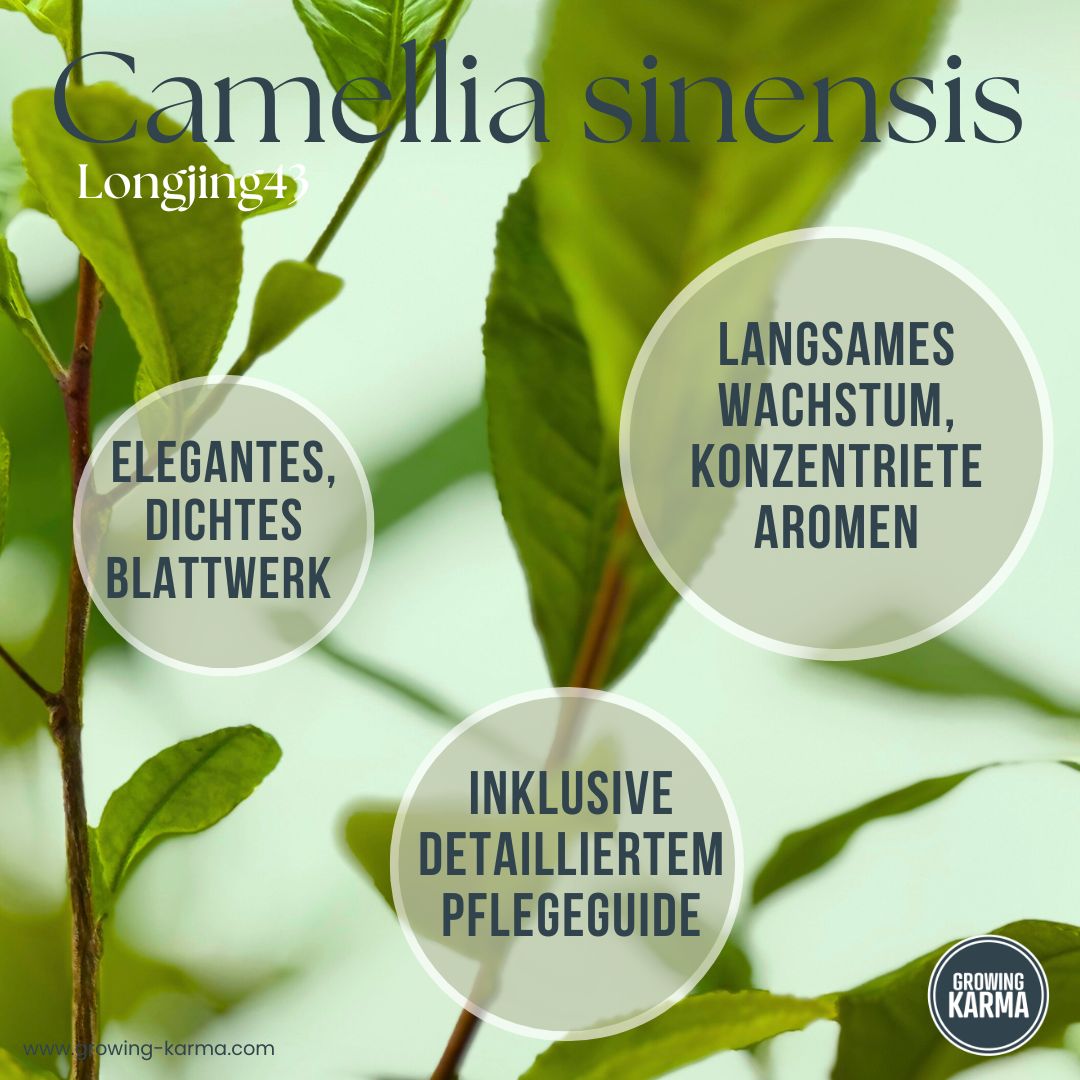
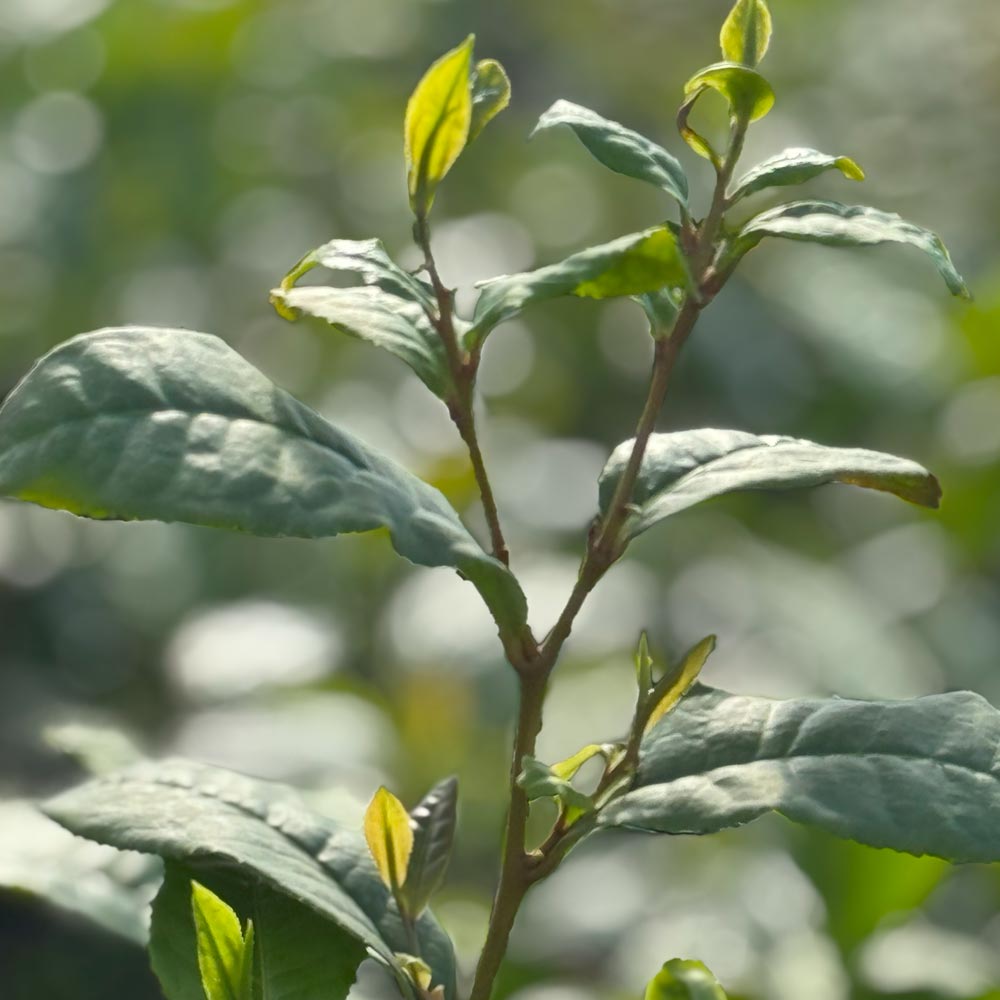

Camellia sinensis Longjing 43 – Your own tea plant for green and black tea
Offer: Buy 3, Get 1 Free
1 x Camellia sinensis Longjing 43
€16,90 EUR
Free
Tax included. Shipping calculated at checkout
The first step towards your own tea culture
Want to grow your own tea? With Camellia sinensis Longjing 43, this dream becomes a reality. This robust tea plant, grown from seed, not only brings life to your windowsill or garden, but also brings a piece of Far Eastern tea tradition into your home. Growing between 15 and 30 cm tall, it's ready to grow alongside you – day by day, leaf by leaf.
Easy-care and adaptable
The Longjing 43 variety originates from China and is cultivated there for some of the most famous green teas. It is resilient, vigorous, and ideal for growing in pots, raised beds, or outdoors. Whether on a balcony, in a greenhouse, or in partial shade in the garden—this tea plant adapts well. It loves bright locations, low-lime water, and consistent care—without being complicated.
What makes certain tea plants particularly robust or hardy?
Not all tea plants are the same – some defy cold and frost with astonishing resilience. Robust or hardy varieties like Camellia sinensis thrive where others reach their limits. Their resilience is based on several crucial factors.
Adaptation to the climate
Their origins reveal much: Tea plants grown in cooler, mountainous regions such as parts of Nepal, the Himalayas, northern China, Korea, or Japan have adapted to harsh conditions over generations. They develop more resilient leaves and strong root systems—ideal qualities for withstanding frost and wind. This makes them perfect for gardens in more northern locations.
Growth behavior
Hardy tea plants are often characterized by the following features:
- strong growth, even after cold winters
- good frost tolerance at slightly sub-zero temperatures
- compact, bushy growth that protects young shoots
- different leaf sizes – from dense and small to broad and glossy – which react differently to weather
Aromatic and versatile
But it's not just their robustness that's impressive: Many of these varieties surprise with their fresh, clear aromas, which are particularly well-suited to green or freshly harvested tea. Whether as an eye-catcher in the garden or for your own tea enjoyment, hardy tea plants offer both reliability and a distinctive flavor.
These plants invite both passionate gardeners and curious beginners to experience tea culture at home – regardless of the climate.
The Longjing 43 variety originates from China and is cultivated there for some of the most famous green teas. It is resilient, vigorous, and ideal for growing in pots, raised beds, or outdoors. Whether on a balcony, in a greenhouse, or in partial shade in the garden—this tea plant adapts well. It loves bright locations, low-lime water, and consistent care—without being complicated.
When is the best time to plant a tea plant in the garden?
The right time to plant tea
Wondering when to plant your tea plant in the garden? Timing is crucial! The ideal planting window for Camellia sinensis is spring – as soon as the risk of frost has passed and the soil has warmed up slightly, roughly between April and July. This allows the plant to grow in peace without having to contend with the winter cold.
Autumn—between September and October—can also be suitable in milder regions. However, be sure to consider additional protection: a thick layer of mulch or plant fleece will help if it does get cold again. In its first year, the tea plant prefers a slow start—it shouldn't enter winter unprepared.
Whether in a pot or directly in the garden, handle the roots gently and water thoroughly after planting. Soon, the first glossy green leaves will appear—the beginning of your very own tea journey.
Always by your side: The digital care guide
So you always know what your tea plant needs, you'll have access to a digital care guide – available 24/7. This guide will teach you step by step how to optimally care for, prune, and harvest your Camellia sinensis . From the first shoots to your own cup of tea, this guide will guide you through every phase.
Here you will find our digital care instructions and a link to our blog where we publish useful tips under the heading "Care and Maintenance" .
Sustainable cultivation that brings joy
Longjing 43 quickly demonstrates how vibrant sustainability can be: With proper care, it soon bears tender, aromatic leaves that you can use for green or black tea. Each infusion becomes a moment that not only tastes good, but also reminds you of what truly matters: time, nature, and mindfulness.
Made for growth – with the right fertilizer
If you want to get the most out of your tea plant, don't forget about nutrients: With the right organic fertilizer, you can strengthen its roots, promote leaf formation, and support healthy, vigorous growth. This will make your Longjing 43 an integral part of your personal tea culture.
A piece of Growing Karma for your home
This tea plant isn't just an ornamental plant—it's the beginning of a relationship. A relationship with your tea, with nature, and perhaps even with yourself. It represents patience, the joy of taking small steps, and the happiness of seeing something grow with your own hands. And that's exactly what Growing Karma is all about.
Pictures similar - each plant is truly unique :-)

Offer: Buy 3, Get 1 Free
1 x Camellia sinensis Longjing 43
€16,90 EUR
Free
